HSBC 2005 Annual Report Download - page 63
Download and view the complete annual report
Please find page 63 of the 2005 HSBC annual report below. You can navigate through the pages in the report by either clicking on the pages listed below, or by using the keyword search tool below to find specific information within the annual report.-
 1
1 -
 2
2 -
 3
3 -
 4
4 -
 5
5 -
 6
6 -
 7
7 -
 8
8 -
 9
9 -
 10
10 -
 11
11 -
 12
12 -
 13
13 -
 14
14 -
 15
15 -
 16
16 -
 17
17 -
 18
18 -
 19
19 -
 20
20 -
 21
21 -
 22
22 -
 23
23 -
 24
24 -
 25
25 -
 26
26 -
 27
27 -
 28
28 -
 29
29 -
 30
30 -
 31
31 -
 32
32 -
 33
33 -
 34
34 -
 35
35 -
 36
36 -
 37
37 -
 38
38 -
 39
39 -
 40
40 -
 41
41 -
 42
42 -
 43
43 -
 44
44 -
 45
45 -
 46
46 -
 47
47 -
 48
48 -
 49
49 -
 50
50 -
 51
51 -
 52
52 -
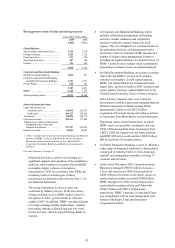 53
53 -
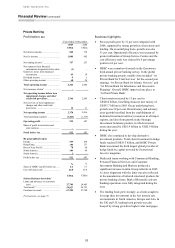 54
54 -
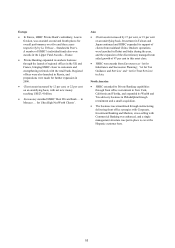 55
55 -
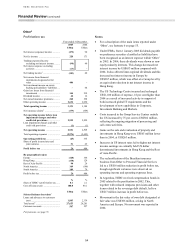 56
56 -
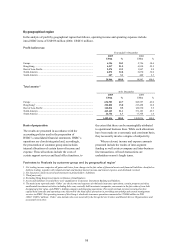 57
57 -
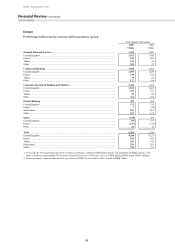 58
58 -
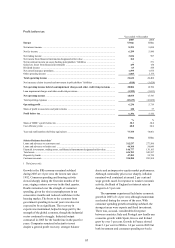 59
59 -
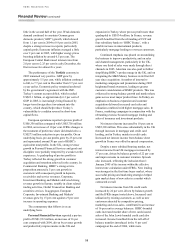 60
60 -
 61
61 -
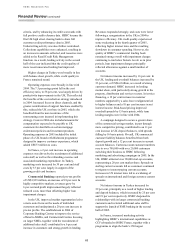 62
62 -
 63
63 -
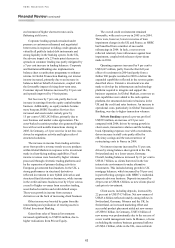 64
64 -
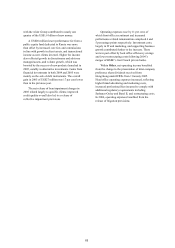 65
65 -
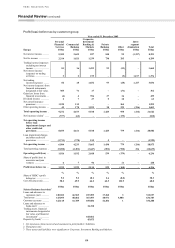 66
66 -
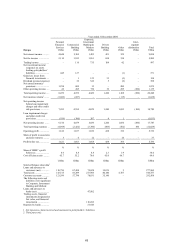 67
67 -
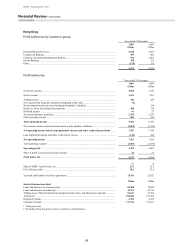 68
68 -
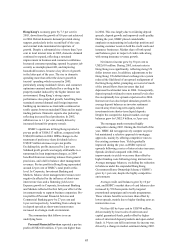 69
69 -
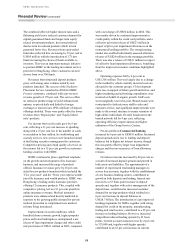 70
70 -
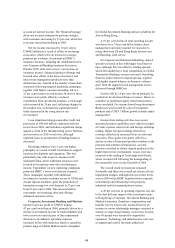 71
71 -
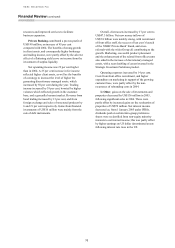 72
72 -
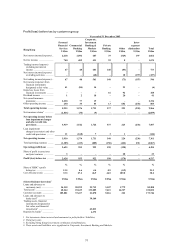 73
73 -
 74
74 -
 75
75 -
 76
76 -
 77
77 -
 78
78 -
 79
79 -
 80
80 -
 81
81 -
 82
82 -
 83
83 -
 84
84 -
 85
85 -
 86
86 -
 87
87 -
 88
88 -
 89
89 -
 90
90 -
 91
91 -
 92
92 -
 93
93 -
 94
94 -
 95
95 -
 96
96 -
 97
97 -
 98
98 -
 99
99 -
 100
100 -
 101
101 -
 102
102 -
 103
103 -
 104
104 -
 105
105 -
 106
106 -
 107
107 -
 108
108 -
 109
109 -
 110
110 -
 111
111 -
 112
112 -
 113
113 -
 114
114 -
 115
115 -
 116
116 -
 117
117 -
 118
118 -
 119
119 -
 120
120 -
 121
121 -
 122
122 -
 123
123 -
 124
124 -
 125
125 -
 126
126 -
 127
127 -
 128
128 -
 129
129 -
 130
130 -
 131
131 -
 132
132 -
 133
133 -
 134
134 -
 135
135 -
 136
136 -
 137
137 -
 138
138 -
 139
139 -
 140
140 -
 141
141 -
 142
142 -
 143
143 -
 144
144 -
 145
145 -
 146
146 -
 147
147 -
 148
148 -
 149
149 -
 150
150 -
 151
151 -
 152
152 -
 153
153 -
 154
154 -
 155
155 -
 156
156 -
 157
157 -
 158
158 -
 159
159 -
 160
160 -
 161
161 -
 162
162 -
 163
163 -
 164
164 -
 165
165 -
 166
166 -
 167
167 -
 168
168 -
 169
169 -
 170
170 -
 171
171 -
 172
172 -
 173
173 -
 174
174 -
 175
175 -
 176
176 -
 177
177 -
 178
178 -
 179
179 -
 180
180 -
 181
181 -
 182
182 -
 183
183 -
 184
184 -
 185
185 -
 186
186 -
 187
187 -
 188
188 -
 189
189 -
 190
190 -
 191
191 -
 192
192 -
 193
193 -
 194
194 -
 195
195 -
 196
196 -
 197
197 -
 198
198 -
 199
199 -
 200
200 -
 201
201 -
 202
202 -
 203
203 -
 204
204 -
 205
205 -
 206
206 -
 207
207 -
 208
208 -
 209
209 -
 210
210 -
 211
211 -
 212
212 -
 213
213 -
 214
214 -
 215
215 -
 216
216 -
 217
217 -
 218
218 -
 219
219 -
 220
220 -
 221
221 -
 222
222 -
 223
223 -
 224
224 -
 225
225 -
 226
226 -
 227
227 -
 228
228 -
 229
229 -
 230
230 -
 231
231 -
 232
232 -
 233
233 -
 234
234 -
 235
235 -
 236
236 -
 237
237 -
 238
238 -
 239
239 -
 240
240 -
 241
241 -
 242
242 -
 243
243 -
 244
244 -
 245
245 -
 246
246 -
 247
247 -
 248
248 -
 249
249 -
 250
250 -
 251
251 -
 252
252 -
 253
253 -
 254
254 -
 255
255 -
 256
256 -
 257
257 -
 258
258 -
 259
259 -
 260
260 -
 261
261 -
 262
262 -
 263
263 -
 264
264 -
 265
265 -
 266
266 -
 267
267 -
 268
268 -
 269
269 -
 270
270 -
 271
271 -
 272
272 -
 273
273 -
 274
274 -
 275
275 -
 276
276 -
 277
277 -
 278
278 -
 279
279 -
 280
280 -
 281
281 -
 282
282 -
 283
283 -
 284
284 -
 285
285 -
 286
286 -
 287
287 -
 288
288 -
 289
289 -
 290
290 -
 291
291 -
 292
292 -
 293
293 -
 294
294 -
 295
295 -
 296
296 -
 297
297 -
 298
298 -
 299
299 -
 300
300 -
 301
301 -
 302
302 -
 303
303 -
 304
304 -
 305
305 -
 306
306 -
 307
307 -
 308
308 -
 309
309 -
 310
310 -
 311
311 -
 312
312 -
 313
313 -
 314
314 -
 315
315 -
 316
316 -
 317
317 -
 318
318 -
 319
319 -
 320
320 -
 321
321 -
 322
322 -
 323
323 -
 324
324 -
 325
325 -
 326
326 -
 327
327 -
 328
328 -
 329
329 -
 330
330 -
 331
331 -
 332
332 -
 333
333 -
 334
334 -
 335
335 -
 336
336 -
 337
337 -
 338
338 -
 339
339 -
 340
340 -
 341
341 -
 342
342 -
 343
343 -
 344
344 -
 345
345 -
 346
346 -
 347
347 -
 348
348 -
 349
349 -
 350
350 -
 351
351 -
 352
352 -
 353
353 -
 354
354 -
 355
355 -
 356
356 -
 357
357 -
 358
358 -
 359
359 -
 360
360 -
 361
361 -
 362
362 -
 363
363 -
 364
364 -
 365
365 -
 366
366 -
 367
367 -
 368
368 -
 369
369 -
 370
370 -
 371
371 -
 372
372 -
 373
373 -
 374
374 -
 375
375 -
 376
376 -
 377
377 -
 378
378 -
 379
379 -
 380
380 -
 381
381 -
 382
382 -
 383
383 -
 384
384 -
 385
385 -
 386
386 -
 387
387 -
 388
388 -
 389
389 -
 390
390 -
 391
391 -
 392
392 -
 393
393 -
 394
394 -
 395
395 -
 396
396 -
 397
397 -
 398
398 -
 399
399 -
 400
400 -
 401
401 -
 402
402 -
 403
403 -
 404
404 -
 405
405 -
 406
406 -
 407
407 -
 408
408 -
 409
409 -
 410
410 -
 411
411 -
 412
412 -
 413
413 -
 414
414 -
 415
415 -
 416
416 -
 417
417 -
 418
418 -
 419
419 -
 420
420 -
 421
421 -
 422
422 -
 423
423 -
 424
424
 |
 |
61
Commercial Banking customers with the most
experienced relationship managers, led to a 10 per
cent increase in medium term loan balances. Sight
deposit balances grew by 7 per cent, though deposit
spreads decreased as maturing funds were placed at
lower prevailing interest rates.
Net fee income increased by 2 per cent to
US$1,621 million, net of IFRSs changes to switch
some fees into the effective interest rate calculation,
which led to a 15 per cent reduction in fee income.
In the UK, higher new business volumes and lending
activity contributed to a US$77 million, or 27 per
cent, increase in loan and overdraft fee income.
Increased customer numbers, coupled with the
introduction of a new small business tariff in January
2005, led to a 13 per cent increase in current account
fee income. Card acquiring income increased by
8 per cent, despite a slowdown in consumer
spending driven by a 6 per cent increase in
transaction volumes, reflecting merchant acquisition.
A 21 per cent increase in card customer numbers
contributed to higher card issuing income.
HSBC benefited from the recruitment of
additional sales staff, development of profitable
relationships with brokers and the success of
dedicated corporate and commercial centres. Invoice
financing fee income increased by 9 per cent,
benefiting from an expanded client base, while a
tariff review contributed to a 16 per cent increase in
treasury income. The recruitment, in both 2004 and
2005, of commercial independent financial advisors,
together with the development of existing sales staff,
led to a 13 per cent increase in insurance and
investment income, with fee income from savings
and investment products increasing by a third.
Income in the vehicle and equipment leasing
businesses decreased by 13 per cent, following an
agreement to outsource the operational functions of
the UK vehicle finance contract hire business to Lex
Vehicle Leasing, which took effect from November
2005. Excluding the transfer, net fee income from
leasing increased by 5 per cent.
Loan impairment charges and other credit risk
provisions increased by 26 per cent to
US$378 million. In the UK, lending growth and
sizeable allowances against a small number of
accounts led to a US$162 million increase in
charges. Overall credit quality remained relatively
strong, although some deterioration was evident in
the market in the last three months of 2005 as
consumer spending declined. In France, new
individually assessed allowances were largely offset
by higher recoveries, while in Malta net releases
decreased as a large release against a single customer
in 2004 was not repeated.
Operating expenses decreased by 5 per cent and,
together with increased income, resulted in a
6 percentage point improvement in the cost
efficiency ratio. In the UK, the non-recurrence of
cost reduction expenditure in 2004, together with the
resulting fall in staff numbers and strong cost
control, contributed to a 10 per cent decrease in
operating expenses. Although overall staff numbers
declined, additional sales staff were hired to take
advantage of business opportunities in support of
revenue growth. These sales staff were supported by
press and other advertising campaigns aimed at
attracting customers switching banks and start-up
businesses to HSBC, together with a campaign
targeting SMEs which contributed to an increase in
marketing costs.
In France, staff recruitment, increased marketing
activity and re-branding led to an 8 per cent increase
in costs. Staff costs rose as HSBC France recruited
additional sales staff to support business expansion,
and success led to higher performance-related
remuneration. Campaigns targeting top tier
commercial customers and supporting product
launches led to an increase in marketing expenditure,
while rebranding and supporting activity to
emphasise the ‘HSBC’ name change also
contributed.
In an economy which grew by 5.5 per cent in
2005, increased business activity, the launch of SME
banking and the recruitment of additional sales and
support staff in Turkey contributed to a rise in
income and a 17 per cent increase in operating
expenses.
Corporate, Investment Banking and Markets
reported a pre-tax profit of US$2,114 million, an
increase of 27 per cent, compared with 2004.
Revenues from all major client-related trading
activities increased, particularly from the credit and
rates, equities and structured derivatives businesses
where HSBC has invested in upgrading its
capabilities. Operating expenses rose, reflecting the
first full-year cost of the expanded sales and
execution capabilities. However, cost growth slowed
in the second half of 2005 and in aggregate in
Europe, revenue growth comfortably surpassed
growth in costs. In Europe, 2005 marked the
transition from the investment phase of Corporate,
Investment Banking and Markets’ development
strategy to a focus on implementation.
Total operating income increased by 15 per cent
to US$5,510 million. Balance sheet management and
money market revenues declined by approximately
46 per cent reflecting a challenging interest rate
